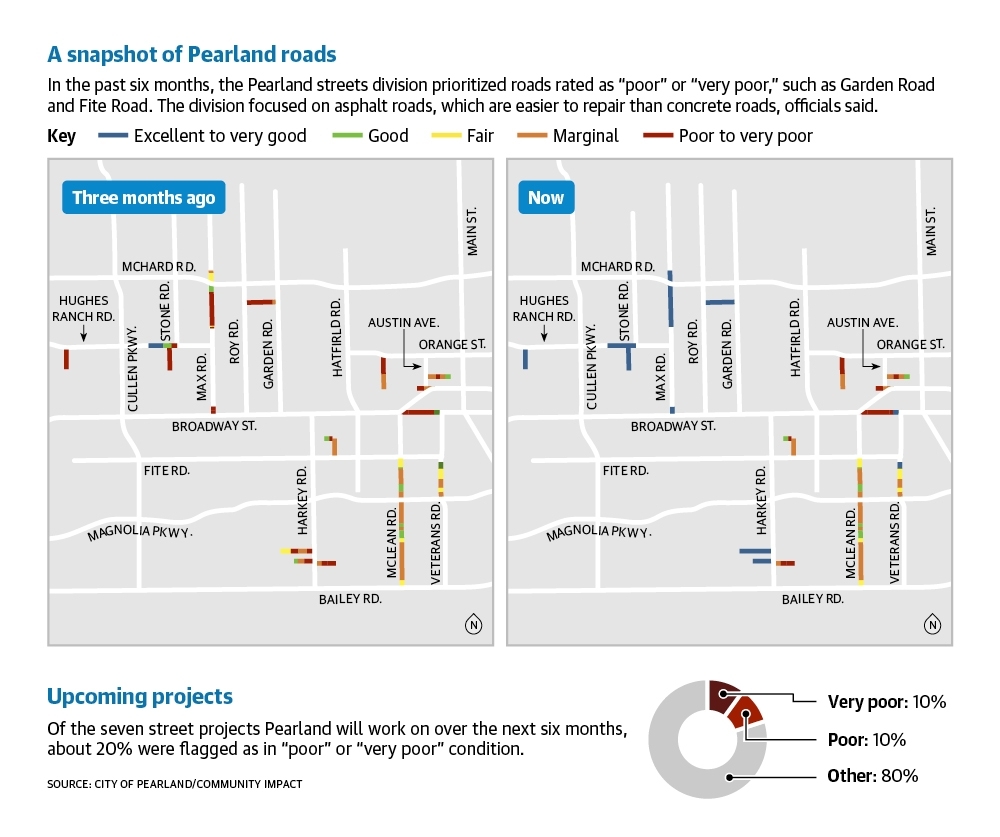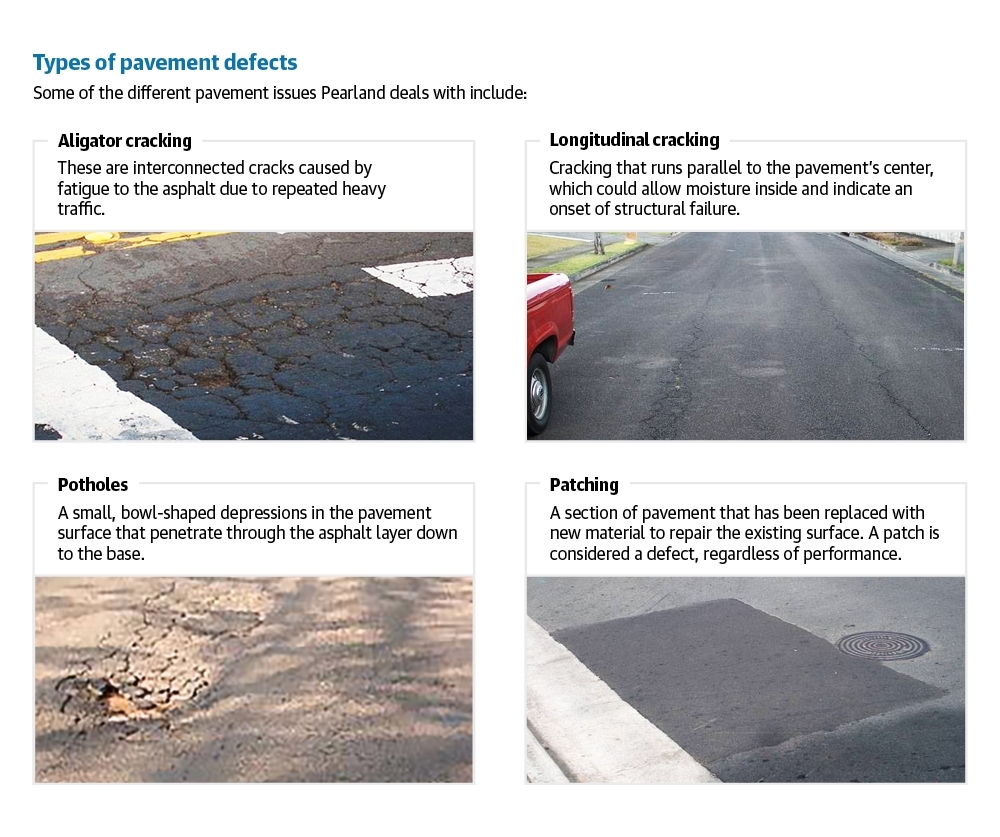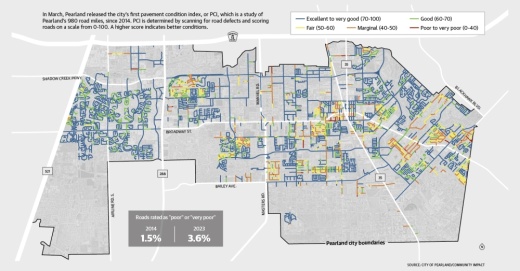This growth has prompted city staff to think critically about how to preserve Pearland’s streets.
In July 2023, Communications Director Josh Lee said the city conducted the first study of Pearland’s roads since 2014, gathering data to determine the city’s pavement condition index, or PCI, which is graded on a scale of 0-100. The higher the score, the better the condition. Completed in March, the study showed the city’s pavement condition index had fallen to a grade of 74—down from 76 in 2014, Community Impact previously reported. Officials said among a few factors, recent droughts have caused issues with road quality.
What's being done
In Pearland, 82% of the city’s road miles have a condition of “good” or better, compared to 89% across the state of Texas, according to a report detailing streets through fiscal years 2020-2023 from the Texas Department of Transportation’s pavement management information system.
Despite this, data from Infrastructure Management Services, which carried out Pearland’s study, scored the state’s average lower than Pearland, with a PCI of 68, according to city documents.
Pearland Right of Way Superintendent Dante Prescod said city officials hope to improve its score by repairing the roads that are most damaged first.
Historically, the city has published its PCI scores every five to seven years, Pearland Communications Director Josh Lee said.
This year, the city launched on its website a public-facing interactive PCI platform that is updated more frequently to capture the city’s progress on road repairs, Lee said.
“This now can be a living document ... which I think is a really powerful thing,” Lee said.
Ideally, the map will get updated every couple of weeks to reflect new projects, Prescod said.

The conditions
Lorenzo Wingate, director of engineering and public works for Pearland, said he felt the majority street issues came from severe weather conditions.
“We went through severe drought ... two years in a row,” Wingate said. “That really takes a toll on the roadway conditions.”
Heavy traffic as well as water seeping into the roads or a lack of moisture entirely can cause the ground underneath the road to separate, creating cracks in an asphalt road, which tend to wear down faster than concrete, Wingate said.
More than 200 miles of Pearland’s streets are asphalt, which is a greater number and proportion than several nearby cities, according to Pearland’s June 2024 Capital Improvement Project update.

Project funding
City staff recommended Pearland invest $5.97 million annually in street repairs to maintain the city’s current PCI score of 74. Despite this, FY 2024-25’s budget, which was approved Sept. 23, included $4.1 million for streets.
In its five-year capital improvement program, Pearland officials provide nonbinding recommendations on how much money to fund streets.
City staff recommended setting aside $44 million in 2026 to fund larger thoroughfare projects, such as adding additional lanes to Miller Ranch Road, Wingate said.
Looking ahead
Despite Pearland’s total road miles growing by 141 miles since 2014, the city’s small streets division has a staff of nine, according to city documents.
The team has only enough manpower to conduct minor repairs such as filling potholes, Wingate said. To help, the city approved five new positions in September. The additional staff will start in April and cost the city $267,193, according to the FY 2024-25 budget.
By hiring five additional people, the city hopes to provide more thorough repairs such as crack sealing and preventive maintenance. Otherwise, the city could be on the hook to replace entire roads, coming at a higher cost to taxpayers, according to city documents.
It takes a six-person team to patch potholes or do an asphalt repair, Wingate said. For larger projects, such as concrete repair or repairing a few hundred feet of asphalt road at once, the city needs to hire contractors, Wingate said.
“Right now, we don’t have the ability or the staffing, and so honestly we don’t have enough equipment to be able to follow [larger projects],” Wingate said.





